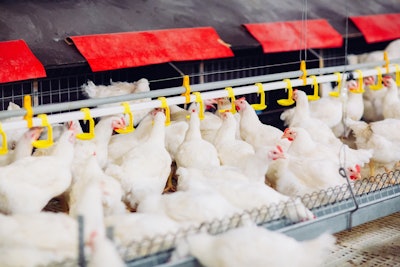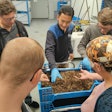
When added to diets correctly, trace minerals can play an important role in disease control and flock uniformity for commercial poultry.
“By making it a check the box activity, nutritionists are actually leaving a lot on the table,” said Gavin Boerboom, global manager, minerals, Selko, the feed additive brand of Nutreco. “At the same time, trace minerals can also negatively affect some of the things that nutritionists have spent a lot of time adjusting and optimizing.”
Trace mineral considerations for poultry diets
Part of the challenge of optimizing trace mineral amounts in poultry diets stems from the fact that animal requirements aren’t static. In other words, the minerals a bird needs can change day to day depending on a number of external and internal factors, from temperature to humidity to the health of the flock surrounding it and more.
“The tricky thing is that obviously when we produce or formulate a diet, we’re formulating a diet for thousands of birds. We do this while knowing the requirement of each individual bird is going to be different,” Boerboom explained.
However, compensating for changing animal requirements by adding too much of a trace mineral can also have negative impacts on the availability of other ingredients in the poultry diet. For example, feeding a highly reactive copper source could negate the positive effects of other vitamins and minerals.
Complicating things further, some trace minerals can affect the absorption of other trace minerals, such as iron and manganese.
“Even though some of these trace minerals can look or seem very similar, they aren’t. As an example, I think a general theme in the industry is that organic minerals are better, but the differences you have between different organic trace minerals is huge but between different mineral sources as well,” Boerboom said.
“Not a lot of people take into consideration trace minerals. Hence, when they do, they go back to basics which is organics are better and I’m going to use the cheapest organic, but that’s not how it works. You should really consider what’s the choice I’m making and how can I make sure that I’m doing the right thing to cover my bases.”
During the European Poultry Conference held in June, Boerboom presented trial findings showing how combining organic and hydroxychloride minerals could help meet birds’ requirements and maintain optimal production efficiencies.



















